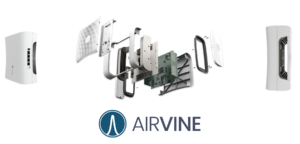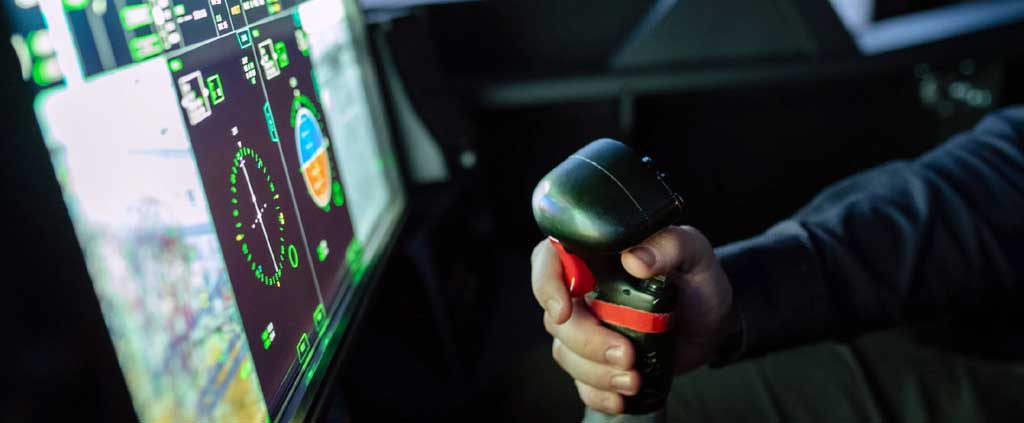Pilot Testing Lessons
Lessons Learned from Pilot Testing of the WaveTunnel System
Pilot testing continues with WaveTunnelTM equipment having been shipped to over 40 prospective partners and end users worldwide (as of May 11, 2022). We’ve gotten a lot of excellent feedback from this process. Much of the focus of the Pilot Program has been on verifying the performance of the WaveTunnel nodes, and in that regard the feedback has been off the charts. Partners are reporting multi-gigabit/sec data rates with rock-solid stability. They’ve also been tremendously impressed with how quickly a link can be brought up (a few tens of minutes) and the ease with which signals can penetrate most interior walls @ 60 GHz.

There is also a business-related aspect of the trial where we collect feedback on use cases. There is opportunity in every vertical market that tested the equipment. The following is a summary of the kind of feedback that we are getting.
Large Public Venues
Airvine has been working with a world-class convention center in the Upper Midwest. The structure is all concrete and WaveTunnel technology is being used to backhaul Wi-Fi access points that needed to be placed as close as possible to ticket scanners for optimum performance. If they aren’t close, the concrete in the structure will attenuate the Wi-Fi signal. Airvine technology allows these APs to be placed in the optimum location, something that would be very difficult when using structured wiring.
Airvine is also working with an outdoor public venue which has long suffered from poor Internet access. Vaughn Davis discusses this opportunity in the video at the end of this blog. WaveTunnel technology is the perfect solution for quickly enabling broadband access in any situation.
Heritage Buildings
Our solution is finding a home in Heritage Buildings where drilling through walls to pull wire is either frowned upon or not allowed. WaveTunnel technology can backhaul a broadband Wi-Fi 6/6E access point WITHOUT impacting the structure in anyway. Nodes can hang from brackets, poles, or stands. The WaveTunnel’s RF signal was able punch through most building materials, and the sophisticated software was able to route around obstructions when necessary.
Office Buildings
The real sweet spot for this technology surfaced anytime there was an urgent need for connectivity. Our pilot testers found that they could bring up a link in a few minutes. With structured wiring it could be weeks or even months to get a contractor onsite. The quick installs meant that broadband backhaul could be enabled with little or no disruption to the client’s business. No RF skills were required to install a WaveTunnel system, which was another big plus. Our mantra is to keep it fast and simple.

Most enterprise accounts will start with a handful of nodes to quickly support an urgent business imperative, or the pet project of an important VP. From there the equipment will find a home backhauling Wi-Fi 6/6E access points, IoT deployments, augmented reality applications, and eventually even private 4/5G deployments (future). The equipment is perfect for a build-as-you-grow scenario, where capacity is only added when required. This contrasts with structured wiring where the usual case is to massively overbuild when the contractor is onsite.
Higher Education
Airvine has been involved in a number of trials on college campuses. The challenge in one case was to improve Wi-Fi coverage in an auditorium without having to string unsightly copper cabling for backhaul. The Airvine solution was quick, inexpensive, and aesthetically pleasing.
In another case, the WaveTunnel technology was used to support Internet access in temporary tents set up for special events. This is a perfect application for Airvine as our nodes can be installed in minutes and removed just as quickly. It also eliminates the opportunity for people to trip over wires that must be deployed when using structured wiring.
Multi-Dwelling Units (MDUs)
This is becoming a very interesting opportunity for WaveTunnel technology as managed Wi-Fi services sweep through the MDU industry. There is an excellent write up on the managed Wi-Fi opportunity in MDUs that makes the case that amenities are increasingly important to prospective tenants, and no amenity is more important than broadband Internet access.
Most MDUs were constructed many years ago without a thought to running copper or fiber up and down every hallway. The ceilings are typically made of concrete or sheetrock, neither of which is conducive to pulling wire. Airvine technology is a quick and easy way to add broadband backhaul capacity without tearing into walls and disrupting tenants. We’ve had great interest from property owners of all types and in all geographies.
Factories and Warehouses
In this vertical market the challenge comes in having to add additional network capacity to support automation. Options here include new broadband Wi-Fi 6/6E deployments for additional capacity, as well as private 4/5G cellular services for high QOS, low latency applications. It’s also an environment that needs to respond quickly to moves, adds, and changes. Factory floors are seldom static, and the network must be ready to change to support business imperatives. It’s shaping up to be an important market for wireless backhaul technology.
Hospitality
There was an excellent webinar on “The Future of Hospitality Technology” put on by the International Luxury Hotel Association on April 28th. At the end of this thread is a URL that will allow you to stream that webinar. We encourage everyone to listen to the entire session but if time is short, please advance to the 32:40 mark to hear Vaughn Davis, the General Manager of Dream Hollywood, talk about the Airvine solution.
In Closing…
These are just some of the vertical markets that have tested the Airvine kit. The future of enterprise indoor networking continues to move in a wireless direction. Wi-Fi is now the dominant access technology worldwide, and most of us can’t remember the last time we plugged a laptop into an Ethernet cable. The time has now come for wireless to also begin to replace costly, cumbersome, and inflexible cabling that is used to backhaul those access points. Look for a final update on the Airvine pilot program near the end of Q2.
For more on Airvine technology please visit us at www.airvine.com


